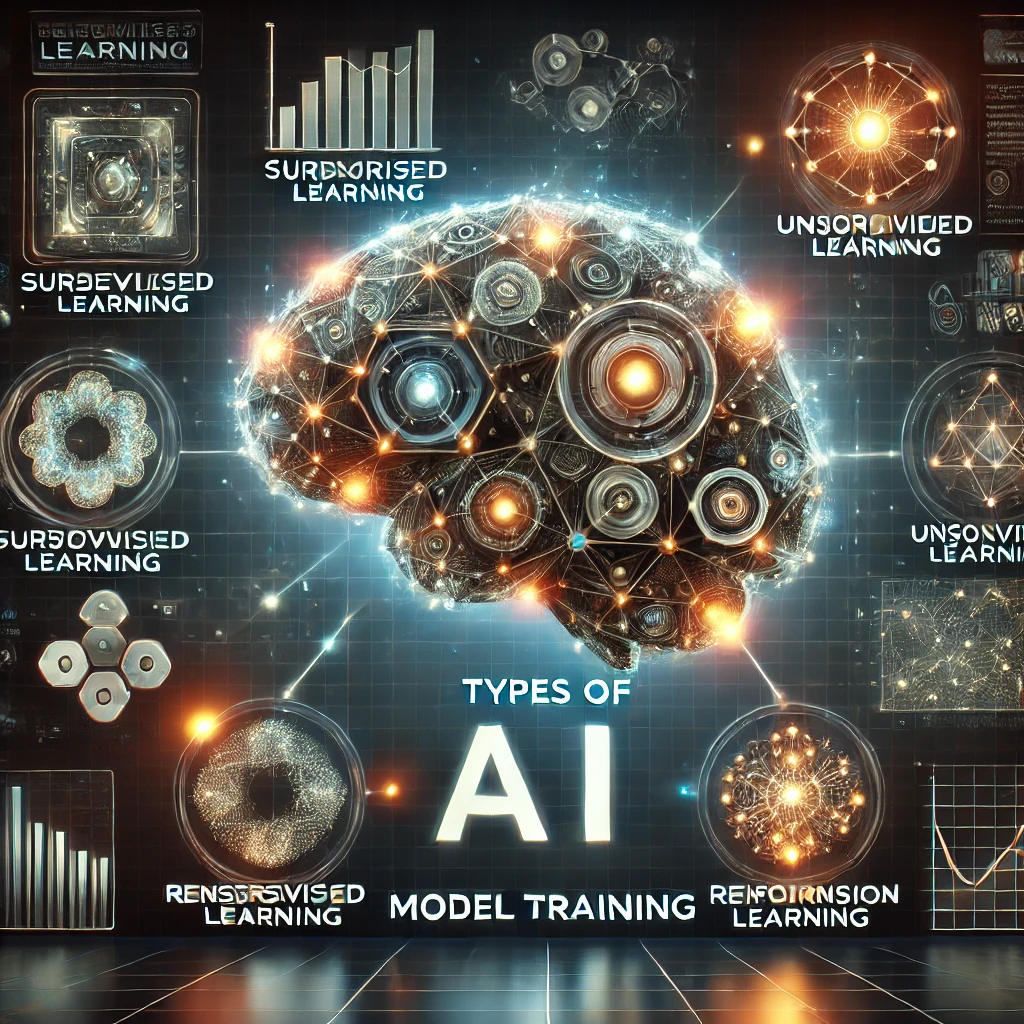AI models learn through different training techniques based on the type of data, the learning objective, and the complexity of the problem. Here are the most common AI training methods:
1. Supervised Learning
📌 How it Works:
- Uses labeled data where inputs have corresponding correct outputs.
- The model learns by minimizing the error between predicted and actual outputs.
📌 Examples:
- Email spam detection
- Face recognition
- Medical diagnosis prediction
2. Unsupervised Learning
📌 How it Works:
- Uses unlabeled data and finds hidden patterns, structures, or groupings.
- Mostly used for clustering and dimensionality reduction.
📌 Examples:
- Customer segmentation
- Anomaly detection
- Topic modeling in text analysis
3. Semi-Supervised Learning
📌 How it Works:
- Uses a mix of a small amount of labeled data and a large amount of unlabeled data.
- Helps improve accuracy when labeled data is expensive or hard to obtain.
📌 Examples:
- Medical image analysis
- Speech recognition with limited transcripts
4. Reinforcement Learning (RL)
📌 How it Works:
- The model interacts with an environment and learns by receiving rewards or penalties for actions.
- Used for dynamic decision-making tasks.
📌 Examples:
- Game-playing AI (AlphaGo, Chess AI)
- Self-driving cars
- Stock market trading bots
5. Self-Supervised Learning
📌 How it Works:
- A subset of supervised learning where the model generates its own labels from data.
- Often used for pre-training large-scale AI models.
📌 Examples:
- Chatbots & AI assistants (GPT models)
- Image recognition (self-learning from large datasets)
6. Contrastive Learning
📌 How it Works:
- The model learns by comparing similar vs. dissimilar data points.
- Often used for representation learning in computer vision and NLP.
📌 Examples:
- Face verification systems
- Sentence similarity models in NLP
7. Federated Learning
📌 How it Works:
- The model is trained across multiple devices without sharing raw data.
- Improves privacy and security in AI training.
📌 Examples:
- Personalized AI on mobile devices (Google Keyboard predictions)
- Healthcare AI (training on patient data without sharing it)
8. Online Learning (Incremental Learning)
📌 How it Works:
- The model learns continuously from new data instead of training once.
- Helps AI adapt to changing environments.
📌 Examples:
- Fraud detection in banking (learning new fraud patterns)
- News recommendation systems
9. Transfer Learning
📌 How it Works:
- Uses a pre-trained model and fine-tunes it for a new task.
- Reduces the need for large amounts of training data.
📌 Examples:
- Using ImageNet-trained models for medical image analysis
- Fine-tuning GPT for domain-specific chatbots
10. Few-Shot & Zero-Shot Learning
📌 How it Works:
- Few-shot learning: The model learns from very few labeled examples.
- Zero-shot learning: The model makes predictions on never-seen categories.
📌 Examples:
- AI that understands new languages with little data
- Image classification with unseen categories
11. Neuro-Symbolic Learning
📌 How it Works:
- Combines deep learning (neural networks) with symbolic AI (logic-based reasoning).
- Helps AI understand causality and reasoning.
📌 Examples:
- AI that understands physics-based reasoning
- Knowledge-driven AI assistants
These AI training methods are used depending on the problem, data availability, and performance requirements! 🚀

